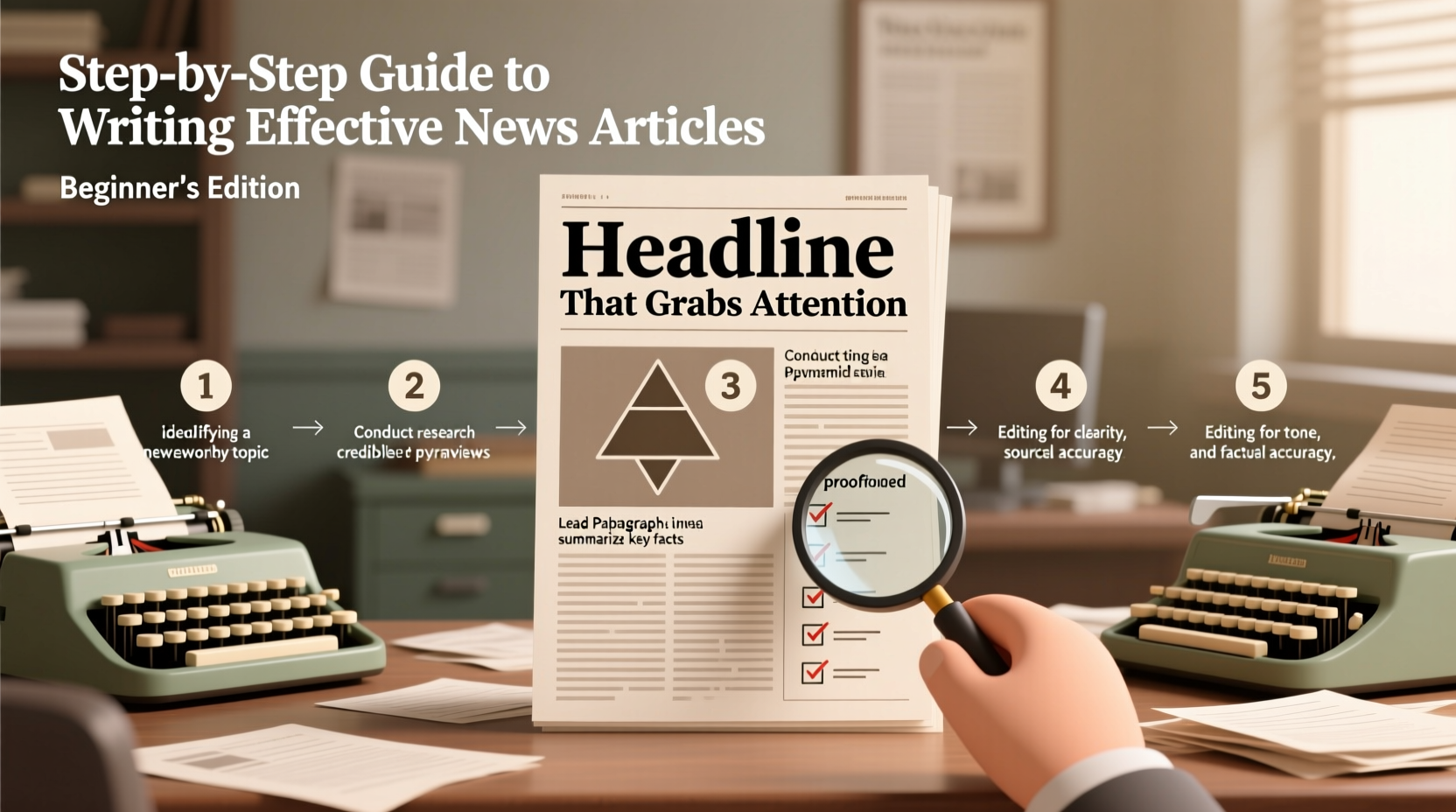Writing a compelling newspaper article isn’t just about reporting facts—it’s about telling a story that informs, engages, and holds attention from the first sentence to the last. For beginners, the process can feel overwhelming: Where do you start? How do you gather information? What makes a headline stand out? This guide breaks down the entire process into clear, actionable steps, helping you produce professional-quality articles even if you’ve never written for a publication before.
Understand the Purpose and Structure of a Newspaper Article

Newspaper articles follow a specific format designed for clarity and efficiency. The most common structure is the **inverted pyramid**, where the most important information appears at the beginning, followed by supporting details and background. This ensures readers get the core message quickly—even if they don’t finish the piece.
The basic components include:
- Headline: A concise, attention-grabbing title.
- Byline: Your name and possibly your role or contact info.
- Lead (or Lede): The opening paragraph summarizing who, what, when, where, why, and how.
- Body: Expands on the lead with quotes, data, and context in descending order of importance.
- Conclusion: May include background, future implications, or additional perspectives.
Step-by-Step Guide to Writing Your First Article
- Choose a newsworthy topic. Ask: Is it timely, relevant, and impactful? Local events, community issues, or human-interest stories are great starting points.
- Conduct preliminary research. Use public records, press releases, or social media to gather basic facts.
- Identify and interview sources. Speak with eyewitnesses, experts, or officials to add credibility and depth.
- Write a strong lead. Summarize the most critical information in 1–2 sentences.
- Organize the body logically. Expand on the lead using quotes, statistics, and examples.
- Edit ruthlessly. Remove redundancy, tighten language, and verify accuracy.
- Submit or publish. Follow editorial guidelines if submitting to a paper or online outlet.
Real Example: Covering a Local School Board Decision
Sarah, a journalism student, was assigned to cover a school board meeting where a controversial budget cut was approved. She began by reviewing the agenda and past meetings. During the session, she took detailed notes and recorded (with permission) key statements. Afterward, she interviewed two parents, a teacher, and the board chair. Her lead read: “The Central Valley School Board voted 5–2 Tuesday night to eliminate funding for arts programs, citing a $1.2 million deficit.” The article went on to explain the financial rationale, included emotional reactions from stakeholders, and concluded with next steps. It was published in her college paper and later picked up by a local news blog.
Do’s and Don’ts When Writing News Articles
| Do | Don't |
|---|---|
| Use clear, concise language. | Use jargon or overly complex sentences. |
| Cite reliable sources. | Present opinion as fact. |
| Attribute all quotes and claims. | Plagiarize or misrepresent information. |
| Stick to the facts. | Add personal commentary unless writing an op-ed. |
| Verify names, titles, and numbers. | Assume spelling or positions are correct. |
“Good journalism begins with curiosity and ends with verification. If you’re not asking questions, you’re not doing your job.” — Maria Thompson, Senior Editor at *The Daily Chronicle*
Essential Research and Interviewing Tips
Strong reporting separates amateur efforts from professional work. Before writing, invest time in gathering accurate, diverse information.
- Use primary sources whenever possible. These include official documents, direct interviews, and firsthand observations.
- Ask open-ended questions. Instead of “Was the event successful?” try “What did success look like for you at this event?”
- Record interviews (with consent). This allows accurate quoting and reduces note-taking pressure.
- Take detailed field notes. Record timestamps, emotions, and environmental details that add color to your story.
- Follow up promptly. Clarify confusing points within 24 hours while the conversation is fresh.
Checklist: Pre-Publication Review
Before submitting your article, go through this checklist to ensure quality and professionalism:
- ✅ Lead includes the 5 Ws and H (Who, What, When, Where, Why, How)
- ✅ Headline is clear, engaging, and under 12 words
- ✅ All facts are verified (names, dates, titles, statistics)
- ✅ Quotes are accurate and properly attributed
- ✅ No grammatical or spelling errors
- ✅ Article follows inverted pyramid structure
- ✅ Word count fits publication guidelines (typically 500–800 words for local news)
- ✅ Tone remains objective and neutral
Frequently Asked Questions
How long should a newspaper article be?
Most local or regional news articles range between 500 and 800 words. Feature stories may run longer, up to 1,200 words. Always check the publication’s guidelines before writing.
Can I use first-person in a news article?
Generally, no. Traditional news writing avoids first-person pronouns (“I,” “we”) to maintain objectivity. Exceptions include opinion pieces, editorials, or narrative journalism with editorial approval.
What makes a good headline?
A strong headline is specific, concise, and sparks interest without being sensational. It should reflect the core of the story. For example, instead of “Big Meeting Happens,” write “City Council Approves New Bike Lane Amid Traffic Debate.”
Final Thoughts and Call to Action
Writing effective newspaper articles is a skill built through practice, precision, and persistence. Start small—cover a community event, interview a local business owner, or report on a campus initiative. Each article sharpens your ability to find the story, verify the truth, and deliver it clearly. The world needs informed voices now more than ever, and every great journalist began exactly where you are: with a blank page and a willingness to learn.









 浙公网安备
33010002000092号
浙公网安备
33010002000092号 浙B2-20120091-4
浙B2-20120091-4
Comments
No comments yet. Why don't you start the discussion?